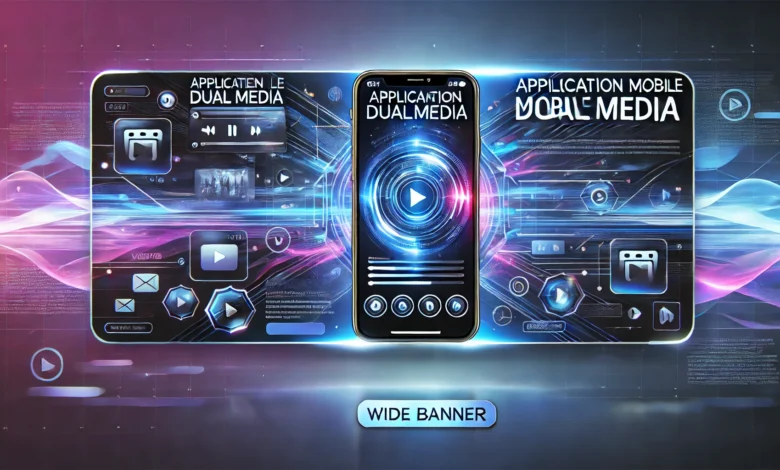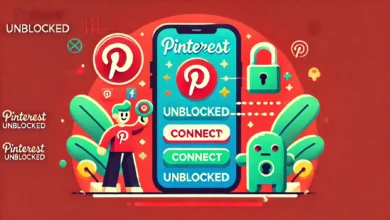Application Mobile DualMedia: A Complete Guide to Understanding Its Impact

Introduction to Application Mobile DualMedia
The world of mobile applications is constantly evolving, and one name that has been generating buzz lately is application mobile DualMedia. At first glance, the phrase might sound technical, but it simply refers to a mobile application concept that merges two or more media channels into one unified platform. This idea of dual media is becoming increasingly important in today’s digital age, where users want everything in one place—streaming, communication, e-commerce, and even productivity tools.
The demand for such applications is growing because people are tired of juggling multiple apps for different tasks. Whether it’s switching between a video streaming app and a messaging platform or trying to manage content from both social media and professional networks, the fragmentation creates unnecessary friction. DualMedia apps aim to solve that by offering a seamless, integrated experience.
But beyond just convenience, applications like these represent a new wave of mobile innovation. They are pushing developers and businesses to rethink how apps are designed, delivered, and monetized. By looking at how an application mobile DualMedia works, we can understand its significance in modern digital life and what it means for the future of app development.
What is Application Mobile DualMedia?
At its core, application mobile DualMedia refers to an app that combines two major forms of media or digital services into one platform. For example, think about a mobile application that allows you to watch live sports events while simultaneously interacting with fans through a built-in chat system. Instead of using one app for streaming and another for messaging, a DualMedia app merges both into a single experience.
This idea is not limited to entertainment. DualMedia applications can exist in education, e-commerce, fitness, news, or even healthcare. For instance, imagine an online learning platform where students can attend live video lectures and also access an integrated note-taking or quiz system without leaving the app. The dual media approach creates efficiency, saves time, and keeps users more engaged.
Another interesting aspect is how DualMedia encourages creativity among developers. Instead of building apps that only serve one purpose, they now have to think about multi-functionality. That makes apps not just tools, but ecosystems where users can achieve more without distractions. This is why DualMedia is not just a trend—it’s shaping the very future of mobile application design.
The Benefits of Using DualMedia Applications

One of the biggest advantages of Application Mobile DualMedia apps is convenience. Users no longer have to switch between platforms to perform related tasks. Whether it’s consuming media while chatting or shopping online while comparing product reviews within the same app, the experience feels smoother and more natural. This seamlessness leads to greater satisfaction and stronger app loyalty.
Another key benefit is engagement. When two powerful media functions are combined, users are more likely to stay within the app longer. For example, if you’re watching a live concert through an app that also allows fan discussions, you’ll spend more time interacting instead of exiting to use another platform. This increases overall screen time, which benefits both developers and brands through better monetization opportunities.
Finally, DualMedia enhances productivity and efficiency. In professional apps, being able to collaborate on projects while accessing resources at the same time eliminates unnecessary delays. The fusion of media functions also reduces the clutter of having too many apps on your device, freeing up memory and improving phone performance.
Real-Life Applications of Mobile DualMedia
To truly understand the impact of Application Mobile DualMedia, let’s look at some real-world examples. Streaming platforms like YouTube and Twitch are already experimenting with chat features that allow users to interact while watching videos. Similarly, e-commerce giants are incorporating live-stream shopping experiences, where sellers broadcast product showcases and viewers can buy instantly Application Mobile DualMedia. These are all forms of DualMedia in action.
In the education sector, platforms like Coursera and Udemy are integrating live discussions, quizzes, and community interactions alongside traditional video lectures. This makes learning more engaging and interactive rather than passive Application Mobile DualMedia. Students can watch, learn, and discuss without moving between apps.
Even fitness apps are tapping into this trend. Some apps now allow you to follow workout videos while tracking your calories and chatting with personal trainers in real time. These are practical examples of how DualMedia is making apps more powerful and user-friendly.
Challenges in Developing DualMedia Applications
While the benefits are clear, creating a DualMedia mobile application is not without challenges. The first major hurdle is technical complexity. Combining two or more high-performance functions into one app requires advanced programming, strong servers, and efficient design to ensure that the app doesn’t crash or slow down.
Another challenge is user experience design (UX). If not executed properly, adding too many functions in one app can overwhelm users instead of helping them. Application Mobile DualMedia must strike the right balance between functionality and simplicity. An app that tries to do everything may end up doing nothing well, so clarity in design is crucial.
Finally, data privacy and security are significant concerns. DualMedia apps often deal with larger volumes of user data since they handle multiple services at once. Protecting this data becomes more difficult, and developers must adopt stronger security measures to prevent breaches.
The Future of DualMedia in Mobile Applications
Looking ahead, the future of application mobile DualMedia seems promising. As technology evolves, we can expect these apps to become even more sophisticated with the integration of artificial intelligence, augmented reality, and blockchain. Imagine a retail app where you can try on clothes virtually while chatting with friends for feedback in real time—that’s where DualMedia is headed.
The trend also opens opportunities for businesses to create super apps—platforms that serve multiple purposes under one roof. We’ve already seen examples in Asia with apps like WeChat, which combines messaging, payments, social media, and more. DualMedia is likely to play a big role in shaping similar super apps worldwide.
Additionally, as 5G and faster internet connections become mainstream, the technical limitations of DualMedia apps will reduce. This means smoother streaming, faster response times, and overall better user experiences. Developers who embrace this concept early on will have a competitive edge in the global app market.
Conclusion
The concept of application mobile DualMedia is more than just a buzzword—it represents a new chapter in the evolution of mobile apps. By merging different media functions into one platform, these applications simplify digital life, boost engagement, and open up endless possibilities for both users and developers.
While challenges such as technical complexity and data security exist, the benefits far outweigh the risks. From entertainment and education to e-commerce and fitness, DualMedia is already proving its value across industries. As technology continues to advance, we can expect this trend to become the standard for app development worldwide.
If you’re a developer, now is the time to explore DualMedia concepts. If you’re a user, keep an eye out for these apps—they’re designed to make your mobile experience more integrated, efficient, and enjoyable. The era of fragmented apps is fading, and the future belongs to platforms that can do more with less.

